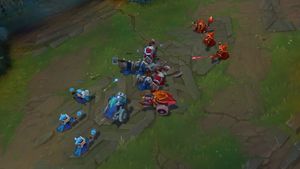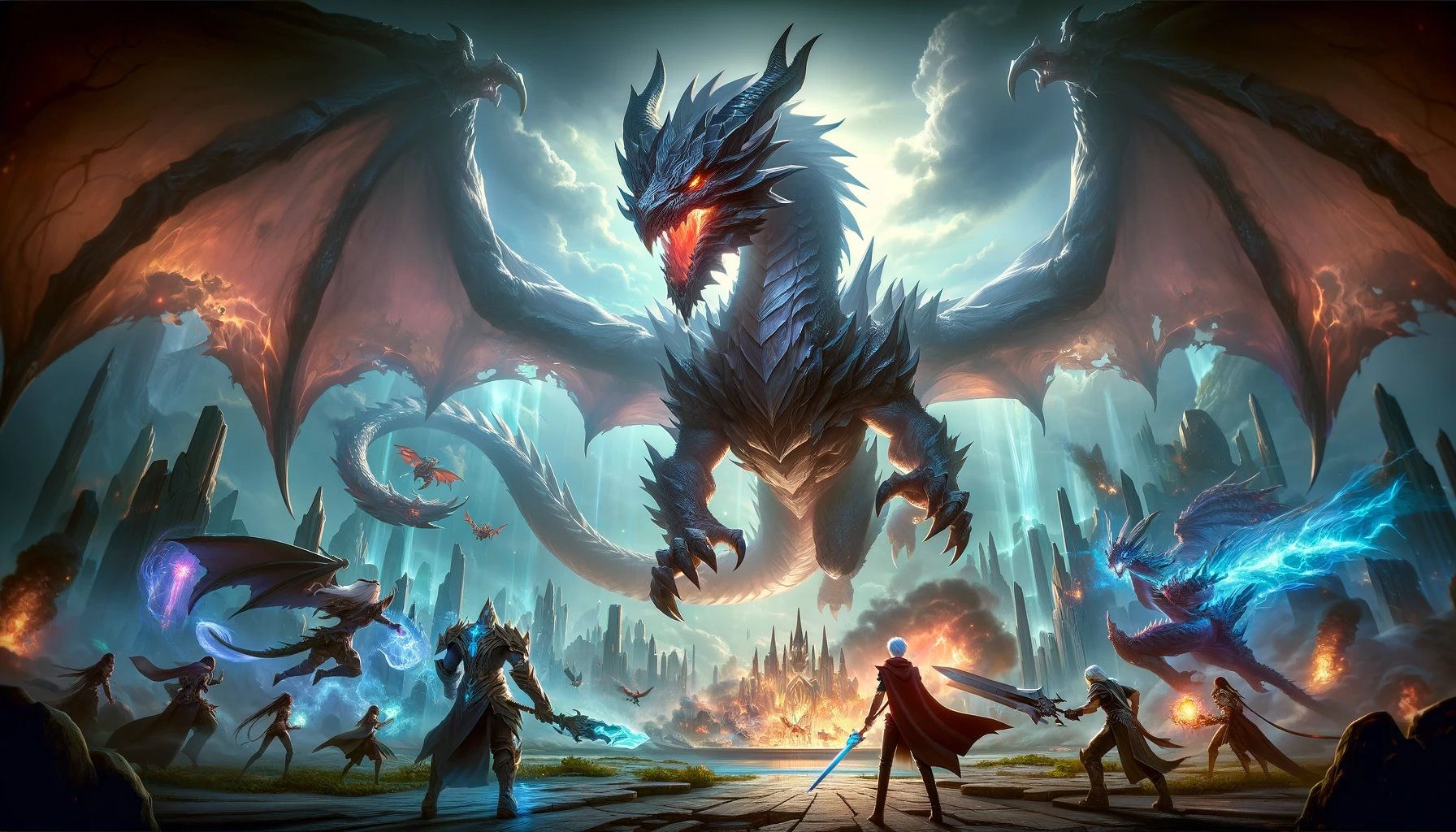In games like World of Warcraft, for example, this would be the best skill order for your character, in Batman Arkham City it might be the best tactic to easily win a certain boss fight.
In the beginning, the players try out a lot of things until a specific style of play is established. This often makes the gameplay seem a bit boring. To avoid such a rusty meta, many game developers patch their game frequently to introduce balance changes.
These can often be changes that are not aimed directly at weakening something that is too strong (overpowered) or improving something that is weak. Much more often it is about improving mechanics that the game developer would like to see being used more often in his game. This way the game stays fresh and new styles of play are enabled.
While developers often go overboard with patches, this is the only way to keep the game interesting. If you look at games such as StarCraft II from the RTS genre, you can quickly see why this once top game went down the drain:
Because Blizzard strived for a perfect balance of all units in StarCraft II, the balancing was done at some point and with that the change in the meta. This game died from lack of changes and new content.
In LoL you look in vain for a deadlocked meta: the game is patched every two weeks. While many players would like more changes in the meta because some champions are unplayable bad, Riot Games puts forward well when it comes to keeping the game fresh.
Certain factors influence the meta in LoL. The most important ones are presented to you in this post.
Patches (Balance Changes)
The patches are the biggest determining factors for changes in LoL. A new patch usually appears every two weeks, which makes more or less significant changes to the game balance.
Champions
Changes to champions can be made through various ways (to name just a few):
- Ability damage
- Ability cooldown
- Cost of abilities
- Base values
- Complete reworks of the kit
The nerfs and buffs of these characteristics are largely responsible for whether a champion is currently perceived as "good" or "bad". Strong champions are characterized by an increased win rate and are accordingly picked more often. They define the meta and by that replace other, weaker champions.
Items
Riot has to keep an eye on the items in the shop because they can be bought by any champion. Items that are too strong are often a must-have, even if there are other items that would make the game more interesting.
Dominant item choises are then often bought across lanes without questioning whether another item would not be better in this game situation because, for example, the item gives way too good stats.
Objectives of the map
Another point of regulation are the objectives of the map. These include all structures and neutral monsters that give a team an advantage in a certain way. These include:
- Rift Herald
- Dragon
- Baron Nashor
- Towers
- Inhibitors
All of these objectives have a value for the team that destroyes them. If an objective becomes too bad to benefit your team, the meta can change towards ignoring such objectives.
If some of them are too strong, the game is decided around these objectives, which means that these then have top priority. This can often be frustrating for the players, as do-or-die scenarios can often arise in the early game because of that.
Map Changes
Changes to Summoner's Rift often affect both teams equally and are therefore not game-deciding because these features are available to both teams.
An example of this would be the fruits that spawn on the map. While they definitely influence the game and enable new tactics, the advantage through them is always the same on both sides, because they can be used by both teams.
One change that primarily helps the defending team are the additional entrances to the base between the lanes. Changes like these are also fair because they are available to both teams.
The meta of the champions is often massively influenced by changes to the map, because champions that can make use of the map's characteristics can benefit heavily from that (even without indiviual buffs to these champions).
Pro Play (Esports)
The meta often depends on what is being played in pro play. Depending on the region in esports, picks and bans also differ, which affects the solo queue of the respective region. Many players actively follow the esports scene and watch the professionals very carefully to see which champions and tactics they are successful with. This is often adopted by the amateur scene on the assumption that the pros would only play the best champions.
But: At times the patches on which esports is played are often not the live patch. To give the pros time to get used to the new patches, the patch that is being played in esports is at least one week old. This leads to a delay in the meta changes, because many players still stick to what is being played in pro play, even if completely new changes have already been added in the live patch.
Until the esports arrives on the live patch, the meta only changes slightly. Only when the pros perform on the live patch, new picks often appear in the solo queue, which have been adopted from the professionals.
Indirect Buffs (and Nerfs)
In this case, a champion does not get better because his stats have been buffed, but because the environment around him changes in a way that makes it easier for that champion.
A good example of this is patch 11.5 and Hecarim, who suddenly became the best jungler in the rift with no buff from Riot. Through various changes to other junglers, items and a meta that favors tanks, Hecarim's way to the king of the jungle was paved.
It is interesting that Hecarim was already extremely strong before that, but it was only due to his increasing popularity in pro play that his pick- and banrate in solo queue went through the roof. Riot responded to the dominance of Hecarim in the next patches with two direct nerfs on his ability stats, as well as an indirect nerf by weakening the item Turbo Chemtank.
This delay in "discovering" the Hecarim pick as a good champion can be explained by the fact that the esports still took place temporarily on an old patch, while Hecarim was already overpowered on the live patch, but was only rarely played.
Developing Counterplay
Not only direct and indirect nerfs can change a champions' performance, but also players who get used to and adapt to a particular pick.
Even if the patch is one and the same, a champion can significantly deteriorate during this period. Especially when new champions are released, these are often considered to be especially overpowered. One one hand, many gamers assume that Riot Games are deliberately overloading these new champions and giving extremely good stats to make them sell better. On the other hand, many players do not yet know how to behave in the presence of this champion in order to prevail against him.
Only gradually does a counterplay develop against this champion, which automatically makes him look worse. Over time, players learn to play against this champion, but also with him, because:
If your team doesn't know what your champion can do, it's hard for your team to adapt. A good example of this is the champion Aurelion Sol, who never really had his place in League of Legends. If Aurelion Sol appears in a game today, many do not know how to interact with him because they do not know the strengths and weaknesses of the champion.
Due to the short patch cycles, the development of counterplay is almost non-existent. The counterpicks can only be used for a short period of time because the patch will change again in two weeks at the latest. This often makes the counterplay obsolete, because the patch then completely changes the meta.











If you press this button it will load Disqus-Comments. More on Disqus Privacy: Link